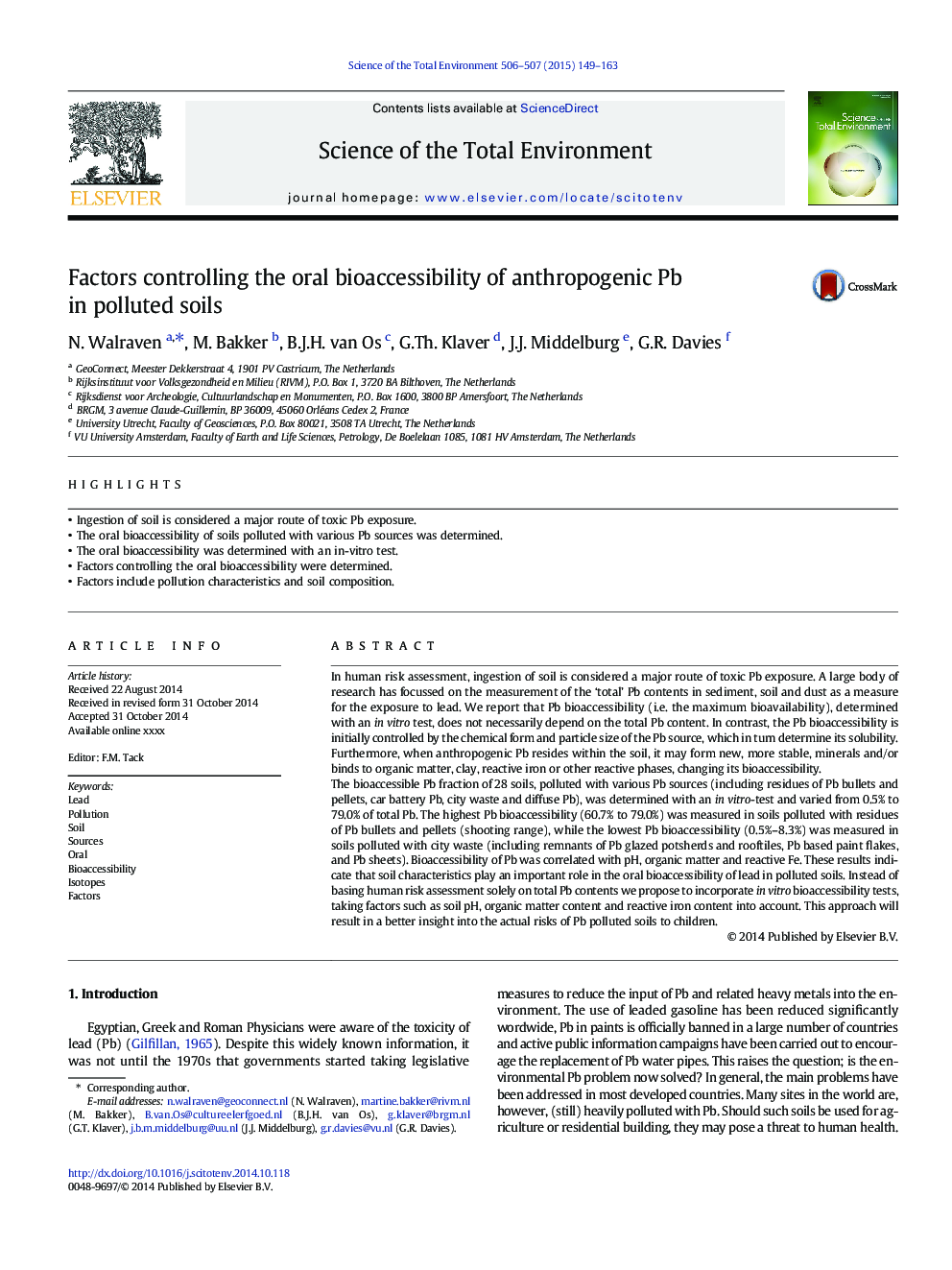| Article ID | Journal | Published Year | Pages | File Type |
|---|---|---|---|---|
| 6327661 | Science of The Total Environment | 2015 | 15 Pages |
Abstract
The bioaccessible Pb fraction of 28 soils, polluted with various Pb sources (including residues of Pb bullets and pellets, car battery Pb, city waste and diffuse Pb), was determined with an in vitro-test and varied from 0.5% to 79.0% of total Pb. The highest Pb bioaccessibility (60.7% to 79.0%) was measured in soils polluted with residues of Pb bullets and pellets (shooting range), while the lowest Pb bioaccessibility (0.5%-8.3%) was measured in soils polluted with city waste (including remnants of Pb glazed potsherds and rooftiles, Pb based paint flakes, and Pb sheets). Bioaccessibility of Pb was correlated with pH, organic matter and reactive Fe. These results indicate that soil characteristics play an important role in the oral bioaccessibility of lead in polluted soils. Instead of basing human risk assessment solely on total Pb contents we propose to incorporate in vitro bioaccessibility tests, taking factors such as soil pH, organic matter content and reactive iron content into account. This approach will result in a better insight into the actual risks of Pb polluted soils to children.
Related Topics
Life Sciences
Environmental Science
Environmental Chemistry
Authors
N. Walraven, M. Bakker, B.J.H. van Os, G.Th. Klaver, J.J. Middelburg, G.R. Davies,
